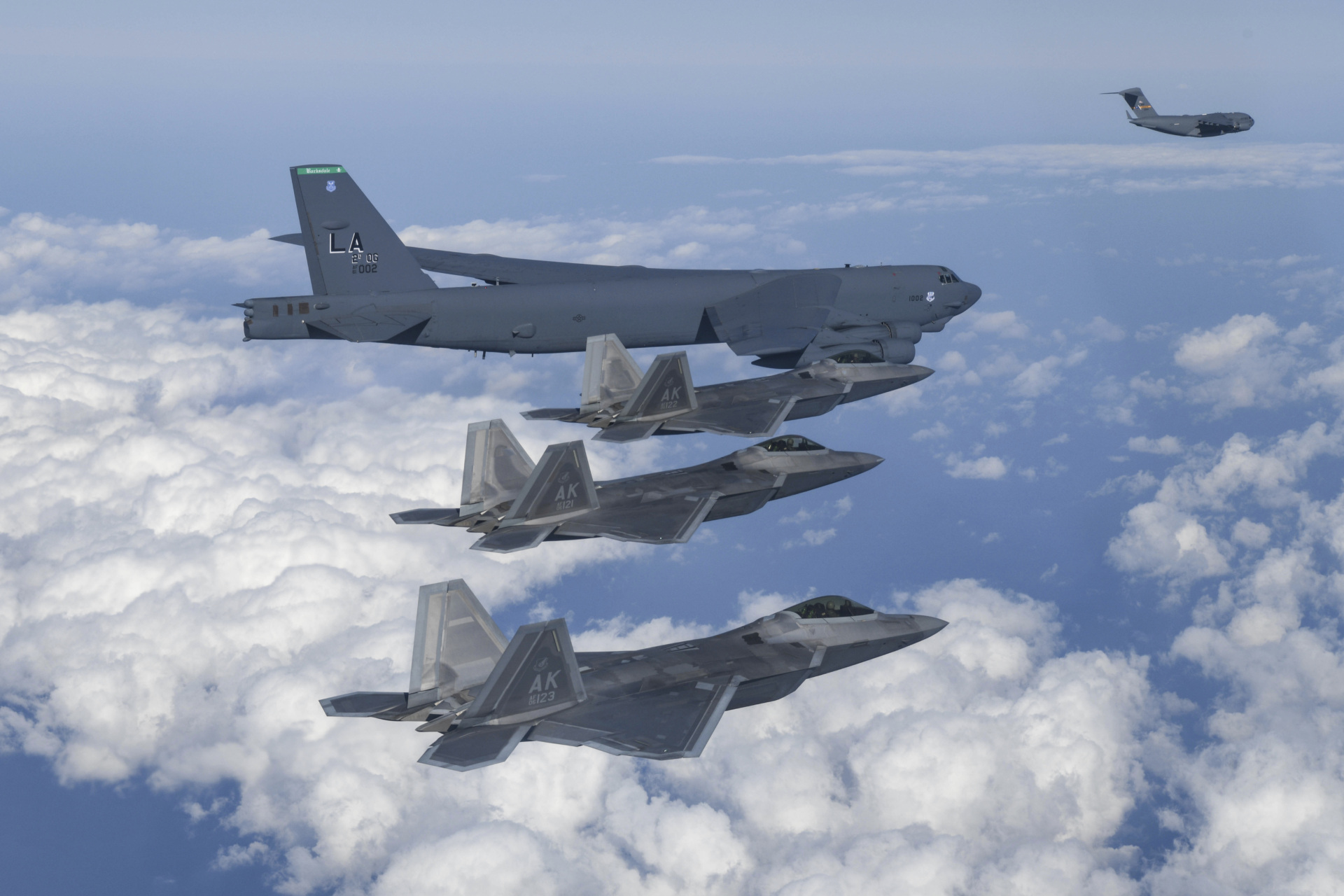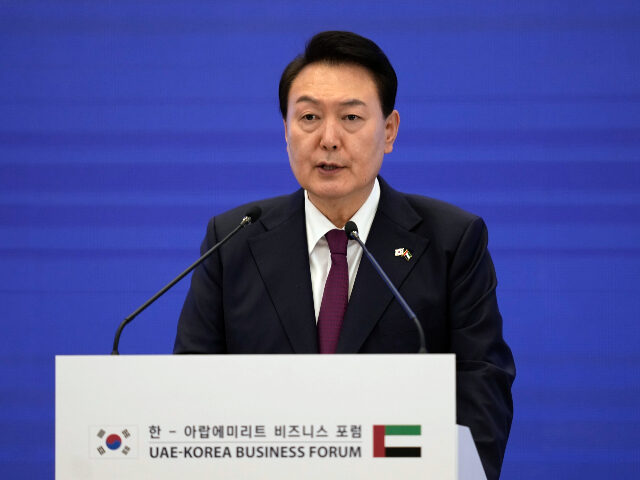South Korea’s latest defense white paper referred to North Korea as the “enemy” for the first time in six years, citing Pyongyang’s violation of bilateral agreements, missile tests, penetration of South Korean airspace with drones, and growing stockpile of weapons-grade nuclear material.
Revival of the “enemy” classification was teased by South Korean government sources in December as conservative President Yoon Suk-yeol reversed the policies of his dovish predecessor, Moon Jae-in.
North and South Korea – and their allies, China and America, respectively – have been technically at war since 1950. Active hostilities ceased with an armistice agreement in 1953.
Yoon referred to North Korea as South Korea’s “main enemy” during his election campaign after the North conducted a series of provocative missile tests in March 2022.
Formally classifying the North Korean tyranny as an “enemy,” a term first used in 1995, was one of 110 policy goals outlined by Yoon’s transition team after he won the election in March. The preferred nomenclature of the Moon administration, used sporadically by some of his predecessors as well, was “direct military threat.”
For much of the past 30 years, the South Korean government has shifted to the less confrontational language in its biennial defense papers when diplomacy with North Korea seemed to be going well and then snapped back to “enemy” after Pyongyang did something horrible – torpedoing a South Korean ship, launching an artillery barrage at a South Korean island, threatening to turn all of South Korea into a “sea of flames,” and so forth.

In this photo provided by the North Korean government, North Korean leader Kim Jong Un and his daughter attend a feast to mark the 75th founding anniversary of the Korean People’s Army at an unspecified place in North Korea Tuesday, Feb. 7, 2023. Independent journalists were not given access to cover the event depicted in this image distributed by the North Korean government. The content of this image is as provided and cannot be independently verified. Korean language watermark on image as provided by source reads: “KCNA” which is the abbreviation for Korean Central News Agency. (Korean Central News Agency/Korea News Service via AP)
Yoon was clearly determined to restore the “enemy” designation, which has a significant impact on the training materials distributed to South Korean military recruits, but if there was a last straw this time around, it was probably North Korea invading the South’s airspace with a swarm of drones in December. The incident was not only provocative but also embarrassing to the South Korean military, which issued a public apology for its inability to bring down any of the invading drones.
The new defense white paper noted that North Korea has violated the 2018 bilateral peace agreement many times, including 14 other violations besides the drone swarm over the past year alone. This was a significant shift from the previous paper in 2020, which said North Korea was “generally” in compliance with the agreement reached by dictator Kim Jong-un and then-South Korean President Moon.
The South Korean defense paper pointed out that Kim brought the “enemy” designation back first, by describing South Korea as such in a December meeting of his Communist party.
“North Korea stipulates its pursuit to communize the entire Korean Peninsula in the rules of the Workers’ Party of Korea revised in 2021 and defines us as an undoubted enemy at the plenary session in December 2022,” the South Korean defense paper said.
Three months before that, Kim’s rubber-stamp legislature passed a law declaring Pyongyang’s nuclear weapons program “irreversible” and authorizing pre-emptive strikes with nuclear weapons against North Korea’s enemies.
“As North Korea continues to pose military threats without giving up nuclear weapons, its regime and military, which are the main agents of the execution, are our enemies,” the paper concluded.
“Under the belief that sustainable peace can be achieved not by the goodwill of the other party but by the superiority of power, the South Korean military will further strengthen its military readiness posture against North Korea,” the paper said.

In this photo provided by South Korean Defense Ministry, A U.S. B-52 bomber, C-17 and South Korean Air Force F-35 fighter jets fly over the Korean Peninsula during a joint air drill in South Korea, Tuesday, Dec. 20, 2022. The United States flew nuclear-capable bombers and advanced stealth jets in a show of force against North Korea on Tuesday, as the powerful sister of North Korean leader Kim Jong Un derided doubts about her country’s military and threatened a full-range intercontinental ballistic missile test. (South Korean Defense Ministry via AP)
The Associated Press (AP) observed on Thursday that the new South Korean defense paper does not use any of Kim Jong-un’s formal titles when referencing him, while the 2018 and 2020 defense papers published by the Moon administration invariably referred to him as “Chairman Kim Jong-un” or “State Affairs Commission Chairman Kim Jong-un.”
As for policy positions, the 2022 edition of the defense white paper recommended preparations for more nuclear and missile tests by the North Korean regime. The paper said that while North Korea touts its most advanced intercontinental ballistic missile (ICBM), the Hwasong-17, as capable of delivering a nuclear payload to U.S. soil, Pyongyang’s missile tests to date have not convincingly demonstrated the necessary atmospheric re-entry capabilities.
The paper warned that North Korea’s stock of weapons-grade nuclear material has increased to about 70 kilograms, a substantial increase over the 50 kilograms estimated in 2020. A single nuclear bomb requires about six kilograms of plutonium.
South Korean officials said on Thursday the extra 20 kilograms of nuclear material was developed by reprocessing spent nuclear fuel rods at the Yongbyon Nuclear Research Center, North Korea’s primary research reactor. The International Atomic Energy Agency (IAEA) detected signs of reprocessing at the reactor in the spring and summer of 2021.
On a more positive note, the defense paper was noticeably more friendly to Japan than the past two editions, seemingly moving past a period of tense relations to embrace Japan as a “close neighbor that shares values” with South Korea.
“The South Korean and Japanese defense authorities will enhance cooperation in information sharing while continuing efforts to resolve other remaining issues and improve relations,” the defense paper said, without yielding any South Korean ground on those issues, such as a long-running dispute over which country owns the Dokdo Islands (called the Takeshima Islands by Japan.)

COMMENTS
Please let us know if you're having issues with commenting.